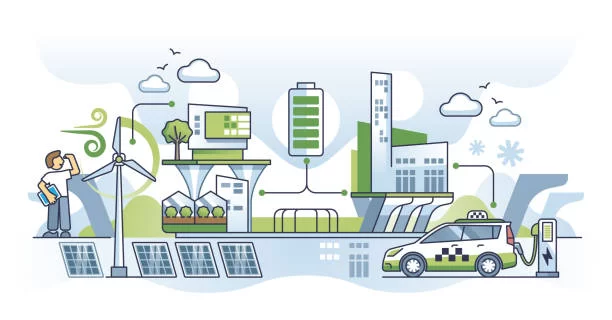How Flywheel Energy Storage is Stabilizing Power Grids?

Flywheel energy storage systems have recently been found to be one of the firmest and most reliable solutions to stabilize power grids, primarily in today's fast-changing energy world. The increasing utilization of renewable resources-such as wind and solar-makes energy storage crucial to ensure grid reliability and stability. Of these, flywheels, though less talked about compared to batteries, offer advantages relative to other technologies that place them for the best grid stabilization applications.

What is Flywheel Energy Storage?
Energy is stored in the Flywheel Energy Storage Systems by accelerating a rotor or flywheel to a very high speed and maintaining that energy as rotational energy. When electricity is needed, the flywheel decelerates and the stored kinetic energy is converted back into electrical energy. Unlike chemical batteries, flywheels are capable of rapid charge and discharge without degradation and hence are particularly suited for applications requiring quick response times, such as frequency regulation.
How Flywheel Energy Storage Stabilizes Power Grids
Frequency Regulation
Frequency is one of the most significant challenge factors in grid management. In situations of imbalance between supply and demand, fluctuations may occur within the grid frequency. Flywheels can address such fluctuations in a matter of milliseconds to inject or absorb energy in order to stabilize the grid. Instant power capability makes them more suitable for such a situation than conventional methods of energy storage, considering the slow response time often characteristic of conventional technology.
Smoothening Operation and Integration with Renewable Energy
As we are getting more into the green grid, proper integration of these variable sources has to be done. Flywheels step in to help smoothen out fluctuations in such cases by storing excess energy during high-generation periods and releasing it when generation drops. In this way, it guarantees the flow of power into the grid even when the renewable output varies.
Long Service Life and Low-Maintenance
Unlike lithium-ion batteries, which degrade with age, flywheels have a very long life and require very minimal maintenance; thus, they are cost-effective for long periods in doing jobs like voltage stabilization and load leveling in power grids.
Practical Applications
Several utilities and grid operators have already begun deploying these flywheel energy storage systems. A good example is Beacon Power in New York, which has installed a flywheel system to support grid frequency regulation-a real-time buffer against fluctuations in supply and demand.
Imagine how flywheels could support global grids by ensuring that even when the wind stops blowing or the sun goes down, the grid remains stable and functional.
Future of Flywheel Storage
With all the discussion of energy storage, batteries are gaining far more attention, but the role of flywheels is sure to become much bigger in various very high-demanding applications, including data centers or industrial facilities. As the technology advances and innovations like magnetic levitation for reduced friction or advanced materials for better energy density come into existence, their efficiency and versatility will be taken to another level.
A Thought to Ponder
Could flywheels, in the following decades, become as common as battery storage with the rising demand for renewable energy? Perhaps it is their combination with other energy storage systems that will provide the most effective grid solution.
FAQs
What makes flywheels better than batteries for grid stability?
Flywheels can respond faster to grid frequency changes, offer longer life, and require less maintenance compared to batteries.
Can flywheel energy storage work alongside batteries?
Yes, flywheels and batteries can complement each other, with flywheels handling short-term fluctuations and batteries managing longer-term energy needs.
How much energy can a typical flywheel store?
Flywheels typically store energy in the range of kilowatt-hours to megawatt-hours, depending on the size and application.
